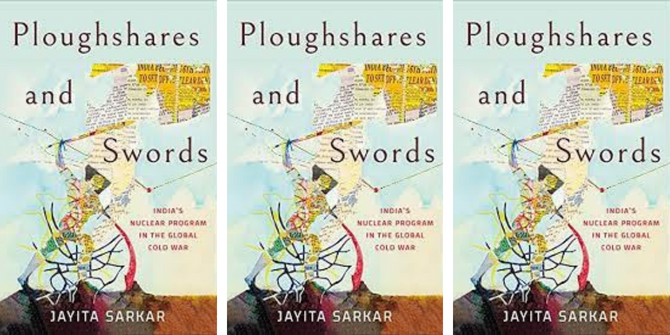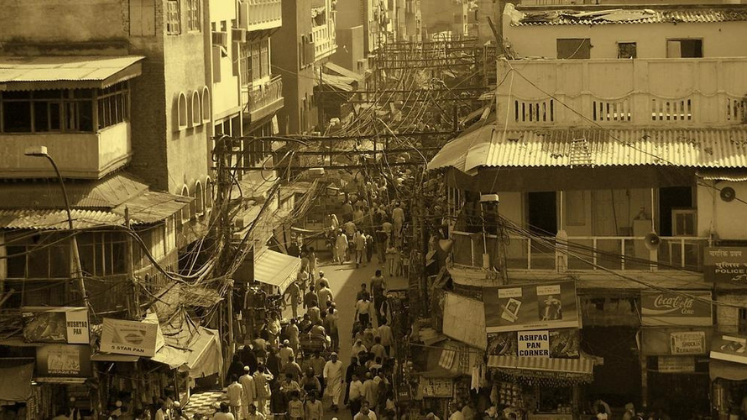 Great Games, Local Rules charts how in the past quarter century, a new ‘great game’ has emerged in Central Asia pitting America against a newly aggressive Russia and a resource-hungry China, all struggling for influence over one of the most volatile areas in the world. Annabelle Chapman finds this book promotes a more nuanced understanding of international presence in Central Asia.
Great Games, Local Rules charts how in the past quarter century, a new ‘great game’ has emerged in Central Asia pitting America against a newly aggressive Russia and a resource-hungry China, all struggling for influence over one of the most volatile areas in the world. Annabelle Chapman finds this book promotes a more nuanced understanding of international presence in Central Asia.
 Great Games, Local Rules: The New Great Power Contest in Central Asia. Alexander Cooley. Oxford University Press USA. September 2012.
Great Games, Local Rules: The New Great Power Contest in Central Asia. Alexander Cooley. Oxford University Press USA. September 2012.
Not so long ago, Central Asia was largely known as a land of steppe and silly dictators, split into a handful of ‘Stans’. The five states of Kazakhstan, Kyrgyzstan, Tajikistan, Turkmenistan and Uzbekistan were the reserve of a dedicated bunch of scholars and activists. Yet over the past few years, the region has attracted growing attention as the crossroads between a post-9/11 United States, a neoimperialist Russia and a rising China.
Great Games, Local Rules is a timely contribution. Alexander Cooley is a professor at Barnard College who writes (and tweets) about Eurasia and the politics of sovereignty. In his fourth book, he looks at the U.S., Russia and China’s engagement in the region over the decade since 2001. It includes a chapter on each of the three powers, followed by more thematic ones on human rights, corruption, and the region in the broader perspective of International Relations.
From the outset, Cooley challenges easy generalisations about foreign competition in Central Asia. The original ‘Great Game’ referred to the 19th Century rivalry between Britain and Russia for influence in the region. However today, the U.S., Russia and China not only compete in Central Asia, but frequently cooperate, to the backdrop of “new transnational networks that link local elites, deal brokers, foreign companies, government actors, and offshore financial vehicles”. Still, Cooley’s perspective remains top-down – despite the renewed academic interest in popular protests and new media sparked by the Arab Spring.
Cooley offers a compelling account of U.S. engagement in Central Asia, in the context of its War on Terror and the search for new supply routes to Afghanistan. However, the U.S. has faced trade-offs between promoting democracy and security, most acutely after Andijan, where the Uzbek government put down demonstrations in 2005 (killing as many as 700 people), claiming they were led by terrorists. Cooley, who has testified for the U.S. Congress on corruption and military base politics in Central Asia, clearly knows this side of the story well. The chapter on Russia is weaker. Cooley describes how Vladimir Putin has seen dominance in Central Asia as means to great power status for Russia, yet how it has often been side-stepped by the United States and eclipsed by China. But there could, for example, be more discussion of any divergence between Putin’s and his Prime Minister Dmitry Medvedev’s conception of Russia’s role in the world, including in Central Asia.
The book then turns to China, “the most nuanced and skilled” of the three. It initially looked towards Central Asia in order to stabilise its adjacent Xinjiang region, home to China’s Uighur minority. But over the past decade, China has greatly expanded its security and energy cooperation with the region and, during the 2008 financial crisis, overtook Russia as Central Asia’s largest trading partner. Since 2001, Beijing has set the tone in the Shanghai Cooperation Organisation (SCO), which brings together China, Russia and four of the Central Asian states (Turkmenistan is not a member) against the “three evils” of terrorism, separatism and extremism. Yet Cooley rejects the common interpretation that the SCO amplifies China’s power. Instead, the organisation serves as a smokescreen for China’s activities, deliberately contrasting its self-proclaimed multilateralism with so-called American “unilateralism”. Cooley links this chapter to topical debates about multipolarity and an alternative, non-Western model of international behaviour, sometimes referred to as the “Shanghai Spirit” in reference to the SCO.
According to Cooley, the game’s real winners are the Central Asian regimes. They set the “local rules” for foreign presence in the region. Each one of them has pursued some form of “multi-vector foreign policy”, playing the three powers off against one another – as the examples in this book show. Furthermore, by “conflating internal and external security threats”, they have dressed up their authoritarian practices as counter-terrorism. Even poor, supposedly weak Kyrgyzstan can play the game, as Cooley shows in Chapter 7, a case study of the U.S. Manas air base in Kyrgyzstan. Threatening to close the base down in 2009, President Kurmanbek Bakiyev led the U.S. and Russia into a bidding war. In the end, the base stayed in place, though not before Bakiyev had extracted payments from both the U.S. and Russia.
Cooley’s perspective is international relations, rather than area studies. Early on in the book, he briefly distinguishes between the five Central Asian states and offers just enough background on their “patrimonial” political systems to support the body of his study. Readers in search of Timur and plov will be left hungry. Sections of The Possessed by Elif Batuman, which describe a summer she spent studying the Uzbek language in Samarkand, offer a light-hearted – but surprisingly informative – taster.
Great Games, Local Rules promotes a more nuanced understanding of international presence in the region, which cannot be summed up by the old ‘Great Game’ metaphor. The reader is left with a lasting impression of the opaqueness that characterises not only Russian and Chinese dealings with local elites, but U.S. ones too. Moreover, this concise book (under 200 pages) with handy subheadings every two pages or so is recommended reading for journalists and students who want to brush up on the developments of the last ten years. In turn, Cooley has brought Central Asia to a wider academic audience. His book does not try to say everything about this complex region, but instead makes a focused argument with a solid empirical basis. This is one of its strengths, rather than a weakness.
—————————————————————————–
Annabelle Chapman is a DPhil candidate at the University of Oxford. Her thesis looks at narratives of identity under Communism. As a freelance journalist, she writes about Eastern Europe and has reported from Ukraine, Poland and Georgia. She holds an MSc in Russian and East European Studies and a BA in Politics, Philosophy and Economics, both from Oxford. Find her on Twitter at @AB_Chapman. Read more reviews by Annabelle.






